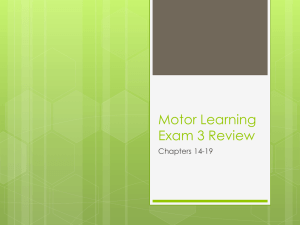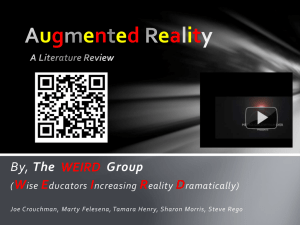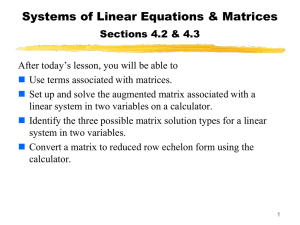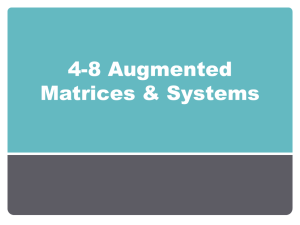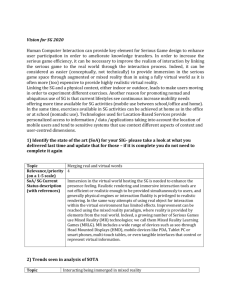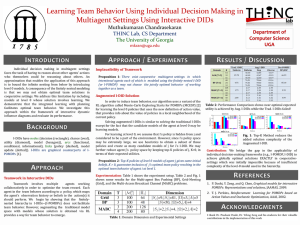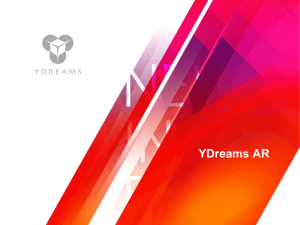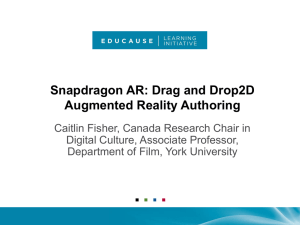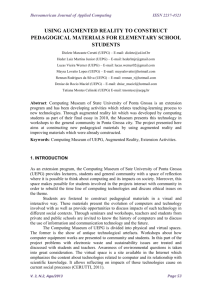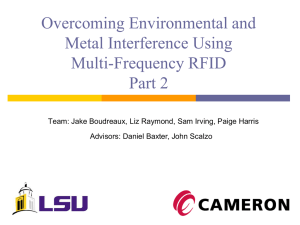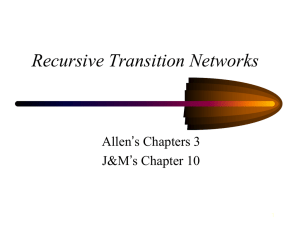PPT
advertisement
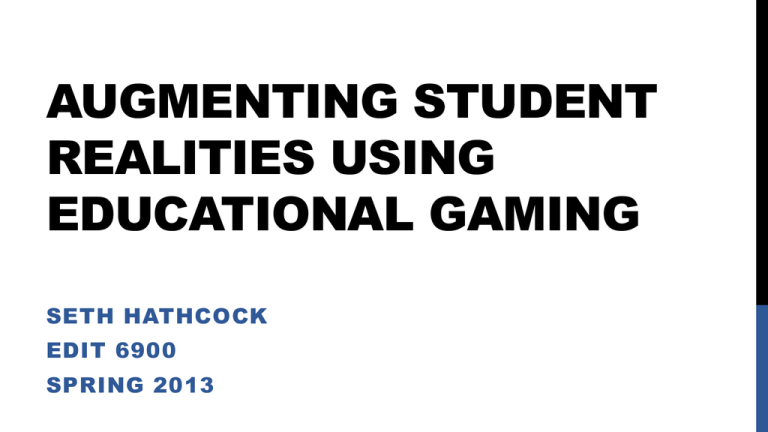
AUGMENTING STUDENT REALITIES USING EDUCATIONAL GAMING SETH HATHCOCK EDIT 6900 SPRING 2013 INTRODUCTION • Augmented Reality is a technology that hasn’t reached the popularity of etextbooks or been adopted as a supplement to mobile devices. • Augmented Reality can lead to increased learning outcomes (Liu & Tsai, 2013). • Already being utilized in educational settings (Kikuo et al, 2011). PROBLEM • Augmented Reality isn’t new. It’s been around for over 30 years in some form or fashion. (Wu et al, 2013) • There isn’t a lot of research that looks at the effects that Augmented Reality can have on education or educational gaming. SO WHAT? • Educational Gaming is becoming more popular as technology becomes more accessible. (Echeverri & Sadler, 2011) • If we are able to address a successful positive correlation between Augmented Reality and Educational Gaming, then we can provide a proven amplification to Educational Gaming. PURPOSE • The purpose of this study is to find whether or not there is a positive relationship between the use of educational gaming and Augmented Reality Technology. This study will attempt to answer the following question: • What are the effects of learning from educational games that use augmented reality? A FEW THINGS TO CONSIDER… • There are a few things to consider before we talk about the Research Methods: • Augmented Reality and learning • Current Uses of Augmented Reality AUGMENTED REALITY AND LEARNING • Not a technology that has been widely adopted (Kesim & Ozarslan, 2012) • Success with classrooms that have integrated (Buesing & Cook, 2013) • Used in some applications featuring flashcards and textbooks (Lee, 2012) CURRENT USES OF AUGMENTED REALITY • Healthcare training applications (Szabó et al, 2013) • Mobile application enhancement • Establishment (museum, stadium, etc.) navigation (Wang et al, 2012) RESEARCH METHOD • Uses qualitative and quantitative research methodologies. • Procedure • A class of 11th graders will be given an educational game to play that deals with finding items or exploring locations around certain geographical areas. After a debrief about the activity and an appropriate amount of time, the student will replay the game with the scenarios, but incorporating augmented reality. The difference in scores will be calculated along with teacher and student surveys. RESEARCH METHOD (CONT.) Game explanation Debrief Playing the game Collect Scores Introduce augmented reality with game Recollect Scores Compare Replay RESEARCH METHOD (CONT.) If there is a significant change in student scores after Augmented Reality is introduced into the game then we can conclude that the effects are positive and should be studied further. REFERENCES • Buesing, M., & Cook, M., (2013). Augmented reality comes to physics. Physics Teacher, 51(4), 226-228. • Echeverri, J., & Sadler, T., (2011). Gaming as a platform for the development of innovative problem-based learning opportunities. Science Educator, 20(1), 4448. • Kesim, M., & Ozarslan, Y., (2012). Augmented reality in education: Current technologies and the potential for education. Procedia - Social and Behavioral Sciences, 47, 297-302. • Kikuo, A., Tomotsugu, K., Hideaki, K., & Sugimoto, Y., (2011). Browsing lunar surface using tabletop augmented reality at exhibit in science museum. Information and Systems in Education, 10(1), 11-31. • Lee, K., (2012). Augmented Reality in education and training. TechTrends: Linking Research & Practice to Improve Learning, 56(2), 13-21. REFERENCES • Liu, P.E., & Tsai, M., (2013). Using augmented-reality-based mobile learning material in EFL English composition: An exploratory case study. British Journal of Educational Technology, 44(1), E1-E4. • Szabó, Z., Berg. S., Sjökvist, S., Gustafsson, T., Carleberg, P., Uppsäll, M., Wren, J., Ahn, H., & Smedby, Ö., (2013). Real-time intraoperative visualization of myocardial circulation using augmented reality temperature display. The International Journal Of Cardiovascular Imaging, 29(2), 521-528 • Wang, H., Huang, C., Lin, C., & Wu, J., (2012). A study of using tangible augmented reality system to enhance the learning effects on museum artifacts. Journal of Educational Media & Library Sciences. 50(1), 135-167. • Wu, H., Lee, S., Chang, H., & Liang, J., (2013). Current status, opportunities and challenges of augmented reality in education. Computers & Education. 62, 41-49.
